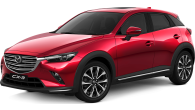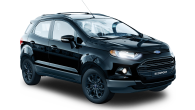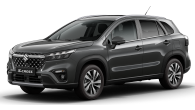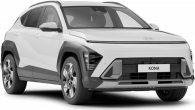Holden’s answer to the SUV wave seemed to fit the bill — initially
New
Holden was caught with its corporate pants down when SUV sales surged at the dawn of the new century. Quite simply, the brand didn’t have one.
Ford was in a similar predicament and responded by building the Territory. Holden dithered, attempting to plug the hole in its model range with the all-wheel drive Adventra wagon derived from the Commodore.
The Adventra was quite a decent car but it was only available with a V8 when it was launched, which hampered its sales. By the time a V6 was introduced it was too late.
The Captiva was ultimately Holden’s answer to the demand for an SUV and the Korean-built wagon launched in 2006.
On the surface it delivered — it was stylish, the driving position was sufficiently elevated and it could fit the driver and six passengers.
On release, all models had on-demand all-wheel drive.
The range began with the SX, climbing through the CX and LX to the range-topping Maxx. The SX could be had as a five-seater, later also as a seven-seater, while the CX and LX were available as seven-seaters. The Maxx, meanwhile, was a five-seater.
When the Captiva arrived it had only one engine choice, a rather thirsty 3.2-litre V6 made locally by Holden, but a year later Holden wisely added a 2.0-litre four-cylinder turbo diesel to satisfy demands for better fuel economy.
In most models, the V6’s outputs were 169kW/297Nm. A different exhaust in the Maxx meant slightly less power.
When it arrived in 2007 the turbo diesel (110kW/320Nm) gave decent fuel economy.
All models were available with a five-speed auto transmission. The SX diesel had a five-speed manual option.
On release, all models had on-demand all-wheel drive. In 2009 there was a front-wheel drive option in the diesel SX.
The Captiva packed a broad array of electronic driving aids, including stability control, traction control, brake-force distribution, emergency brake assist, hill descent and rollover protection. Holden engineers helped tune the suspension for local roads, so it rode comfortably and handled well.
Now
It seemed as if Holden had kicked a goal when it released the Captiva — but it’s turned out to be an own goal, with the car plagued by problems.
Electrical faults are the most common complaint and reports of the ECU light coming on and the car going into limp-home mode feature prominently in reports from owners.
Owners also report problems with the rocker arm bearings failing and causing major engine breakages.
Some have reported losing all power while driving, a couple of instances at most inopportune moments leaving them exposed to danger.
The turbo diesel has a timing belt, which requires changing every 90,000km. It’s important that this is done to avoid major engine issues if a belt breaks.
Owners also report problems with the rocker arm bearings failing and causing major engine breakages.
The V6, on the other hand, has chains driving the camshafts. These don’t need regular replacement but they are subject to stretching, as are the same engines in the Commodore. When the chain stretches it throws out the cam timing and causes the engine to run roughly. There’s no option but to replace the chain, an expensive job.
Also look for uneven tyre wear, as it can be difficult to properly align the Captiva’s wheels and a car that is out of alignment will wear tyres more quickly. A car that hasn’t been serviced properly and regularly is not worth buying.
Smithy says
Looks good but its reliability issues mean it’s a risk.
Owners say
Zdravko Loevski I’ve owned a Captiva diesel for four years and, while it’s nice to drive, the fuel economy is poor at 9.3L/100 km. What’s worse is that it’s mainly driven on the freeway. I will never buy a car with a diesel particulate filter again; mine does a burn four times a tank full. The 18-inch low-profile tyres are not very good for off-road use and Holden servicing has cost too much.
David King I own one of the first Captivas. It’s almost nine years old. On the whole it has been a pleasant car to own and drive. Having driven a vehicle that is higher off the ground than your regular Commodore I wouldn’t go back to a sedan. It has had its niggles. My Holden dealer advised me to do certain things to improve the handling, which I’ve done, for not much money actually. The service people have been pretty darn good. They recently advised me to change the lens on one of the headlights because it was starting to “yellow” and can be expensive to replace the whole thing. I appreciate such practical good advice. I can honestly say, hand on heart that overall it’s been nice and I’d seriously consider another one.
Clive Oliver Our 2008 SX turbo diesel had a whirring noise from when we bought it. Now we’ve been told we need a new gearbox. We’ve also had lots of electrical problems.
Barry Osborne We had to replace the diesel engine in our Captiva after it suffered a terminal breakdown due to failed roller rocker bearings, which I believe is a known fault.
Paul Waite We had a 2011 CX diesel seven-seater which we couldn’t wait to get rid of when the lease expired. The self-cleaning diesel particulate filter ran frequently, after short or long drives. The first time it happened we thought the whole vehicle was overheating and about to explode. Driving the Captiva in the city was extremely uncomfortable — the suspension was rough and you bounced up and down in your seat like you were atop a tractor. It also felt less than robust off-road. There was no noticeable fuel economy advantage in having the diesel and there wasn’t much zip when you needed it on the open road.
Holden Captiva 2006: Cx (4X4)
| Engine Type | V6, 3.2L |
|---|---|
| Fuel Type | Unleaded Petrol |
| Fuel Efficiency | 11.5L/100km (combined) |
| Seating | 7 |
| Price From | $4,620 - $6,820 |
Verdict
Smithy says
Looks good but its reliability issues mean it’s a risk.
Owners say
Zdravko Loevski I’ve owned a Captiva diesel for four years and, while it’s nice to drive, the fuel economy is poor at 9.3L/100 km. What’s worse is that it’s mainly driven on the freeway. I will never buy a car with a diesel particulate filter again; mine does a burn four times a tank full. The 18-inch low-profile tyres are not very good for off-road use and Holden servicing has cost too much.
David King I own one of the first Captivas. It’s almost nine years old. On the whole it has been a pleasant car to own and drive. Having driven a vehicle that is higher off the ground than your regular Commodore I wouldn’t go back to a sedan. It has had its niggles. My Holden dealer advised me to do certain things to improve the handling, which I’ve done, for not much money actually. The service people have been pretty darn good. They recently advised me to change the lens on one of the headlights because it was starting to “yellow” and can be expensive to replace the whole thing. I appreciate such practical good advice. I can honestly say, hand on heart that overall it’s been nice and I’d seriously consider another one.
Clive Oliver Our 2008 SX turbo diesel had a whirring noise from when we bought it. Now we’ve been told we need a new gearbox. We’ve also had lots of electrical problems.
Barry Osborne We had to replace the diesel engine in our Captiva after it suffered a terminal breakdown due to failed roller rocker bearings, which I believe is a known fault.
Paul Waite We had a 2011 CX diesel seven-seater which we couldn’t wait to get rid of when the lease expired. The self-cleaning diesel particulate filter ran frequently, after short or long drives. The first time it happened we thought the whole vehicle was overheating and about to explode. Driving the Captiva in the city was extremely uncomfortable — the suspension was rough and you bounced up and down in your seat like you were atop a tractor. It also felt less than robust off-road. There was no noticeable fuel economy advantage in having the diesel and there wasn’t much zip when you needed it on the open road.
At a glance
Price new: $35,990-$42,990
Price now:
SX - $7000-$17,000
CX - $7500-$18,000
LX - $8000-$20,000
Maxx - $8500-$12,500
Safety: 4 stars
Engines: 3.2-litre V6, 169kW/297Nm; 2.0-litre 4-cyl turbo diesel, 110kW/320Nm
Transmissions: 5-speed auto, 5-speed man; AWD/FWD
Thirst: 8.5L-11.5L/100km
Also consider
Kia Sportage 2006-11 - 4 stars - Korean star turn that’s got the lot. Hard to beat. Pay between $7500-$25,000.
Mitsubishi Outlander 2006-11 - 3.5 stars - Highly rated SUV proves a worthy contender. Pay between $6000-$19,500.
Honda CR-V 2006-11 - 3 stars - An early entry in the SUV segment, the popular Honda does most things well. Pay between $6000-$23,500.
Coming up
Do you own or have you owned a BMW X1? Share your experience with other CarsGuide readers by sending your comments to Graham Smith at grah.smith@bigpond.com or write to CarsGuide, PO Box 4245, Sydney, NSW 2010.
Click here to see more Holden Captiva pricing and spec info.
Pricing Guides

Range and Specs
| Vehicle | Specs | Price* |
|---|---|---|
| Cx (4X4) | 2.0L, Diesel, 5 SPEED AUTOMATIC | $4,730 - $6,930 |
| LX | 2.0L, Diesel, 5 SPEED AUTOMATIC | $5,170 - $7,590 |
| SX | 2.0L, Diesel, 5 SPEED AUTOMATIC | $4,510 - $6,600 |






.jpg)
.jpg)

.jpg)
.jpg)

.jpg)

.jpg)







.png)













.jpg)
